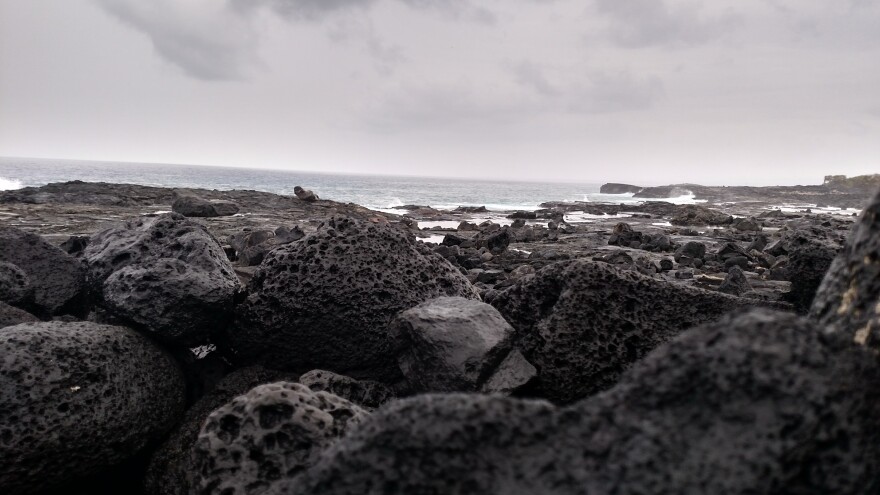This past July, Governor David Ige signed a new law that creates a 10-year marine reserve across a three and a half mile stretch of coastline in North Kona. That came as a huge relief to the community leaders and residents in the area who have been fighting to protect the shoreline and its resources for decades.
At the end of the road in Ka??p?lehu is the Kalaeman? Interpretive Center. It’s part educational, part community space. It’s also where Leina’ala Lightner spends a lot of her time.
“My connection to Ka??p?lehu is basically lineal,” said Lightner, who has worked as the center’s curator for the past 3 years. “My father was born here at Kahuwai in 1916.”

Lightner spent much of her life working near Kahuwai Bay, at the Kona Village Resort. She says most families with ties to this place understand how and what to gather from the ocean. Lightner says that’s not the case anymore. She’s seen those changes with her own eyes.
“I live in Kona all my life and there is so much shoreline from Kailua pier to here that are no more,” she said. “Abundance is gone, no more ‘opihi, no more even pipipi on this side of the rocks. That is sad for me.”
Ka??p?lehu was an area known for its rich diversity and abundance of marine life. But years of overfishing have left their mark. Lightner and other community leaders recently succeeded in pushing the state to create a 10-year no-take rest period. Proponents like Hannah Springer say it will allow for the recovery of fish stocks while they create a management plan for the area.
“We are intervening now while there are still base populations of species that can naturally reproduce and regain that diversity and density of population that we’ve seen in the past,” said Springer.
The rule prohibits taking any marine life from the 3.6 mile coastline and extends out to a depth of 120 feet. Beyond that hook and line fishing is allowed for certain species. And while testimony for the rule was largely positive, some fishermen and Native Hawaiians have argued it impedes on their cultural right to gather. Springer sees it differently.
“We are practicing a traditional and customary kuleana as well, the one to m?lama, the one to care for,” she said.

But some in the community are beginning to adapt. Mike Nakachi is a Kona fisherman and dive tour operator who supports the rest period.
“Guilty as charged, I’ve taken my fair share of he‘e from the reef, some fish over the years, a couple lobsters,” said Nakachi. “But I don’t really have the need to go and practice taking now. I feel that fiduciary relationship as a Hawaiian to also look after these resources.”
What makes Ka??p?lehu unique is the push toward marine conservation came from within. It wasn’t the result of litigation or a contested case, says Wayne Tanaka, a public policy advocate with the Office of Hawaiian Affairs.
“They’re starting to realize that even though they’re isolated and rural, the community here has been really highly engaged,” said Tanaka. “Maybe it’s an indication of their connection to their place.”
The next step for community leaders will be to make sure the state lives up to its word. They continue to monitor the waters as they work toward implementing a future management plan once the ten year rest period is lifted.





